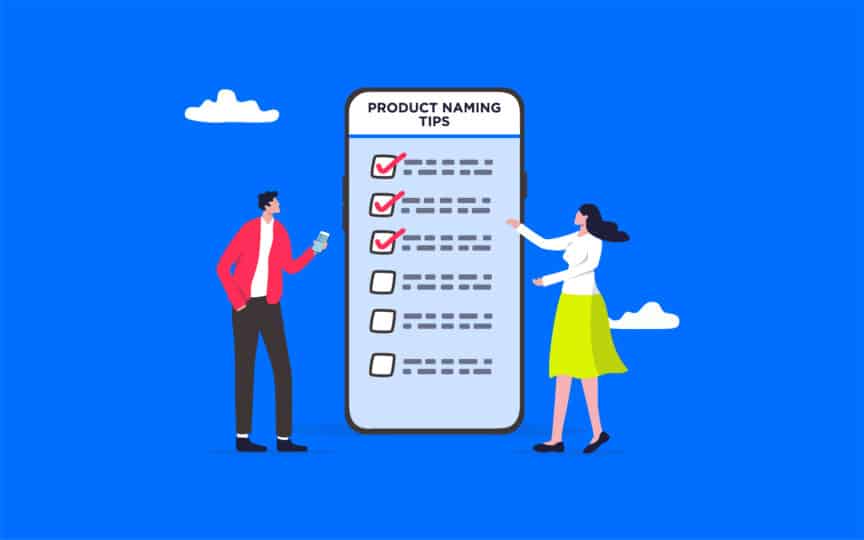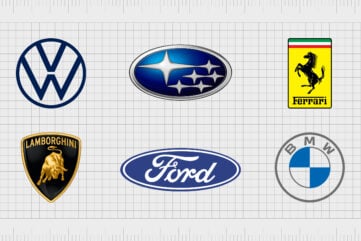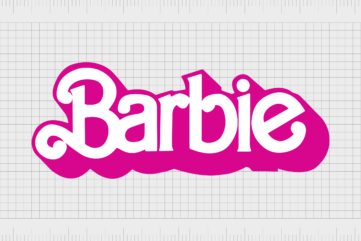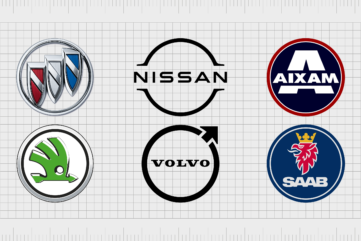How to name a product: Tips, steps, strategies, and golden rules

Figuring out how to name a product can often be tougher than it seems. Choosing the right name for anything is hard. After all, a great name isn’t just a word or phrase, it’s an anchor in the minds of your customers, capable of forming emotional connections and increasing sales.
The best name for your product won’t just differentiate you from your competition. It contributes to your quest for brand recognition, and inspires trust in the solutions you sell. Over time, product names can even become indistinguishable from the items they represent.
Just look at how often people ask for a “Kleenex” instead of tissue paper, or how we request “Post-it Notes” instead of sticky notes. Choose the perfect product name, and you could easily position yourself as a leader in your market.
Today, we’re going to be looking at the most important steps involved in naming a product, and sharing our top tips for selecting the ideal title.

How to name something: The challenges of product naming
Learning how to name a product might seem simple at first. Many business owners assume a great product name will simply come to them, as if by magic. However, the reality is a great name can take a long time to discover.
The ideal name choices don’t just tell customers what your offering does, they also form a connection in people’s minds with specific emotions and ideas. They build confidence in your brand, help to encourage word-of-mouth marketing, and highlight your deeper brand identity.
A great name doesn’t just sound and look great. It also needs to entice your ideal customer to purchase your product, based on their specific needs. Look at how Apple chose the term “Air” for one of their MacBooks, specifically to appeal to those in search of a lightweight product.
To make matters worse, it’s becoming increasingly difficult to find unique names. In 2022, nearly 100,000 trademark applications were filed in the US. The digital world has inspired countless new entrepreneurs to enter the market, and new names are emerging all the time.
Even if you’re lucky enough to instantly come up with a range of name choices, there’s always a chance your ideal name is already in use. You may need to come up with new words, or step outside of traditional naming convention rules to find a unique moniker.

The importance of your product name
Naming your product correctly is crucial to the success of your company. Before your customer sees the item you’re selling, or explores its features, the name of the product is the first thing they’ll encounter. This means it needs to immediately resonate with your target customer.
Fail to choose the right name, and your brand equity and reputation will automatically suffer. What’s more, you may find it’s harder to attract customers to your product and earn sales.
Alternatively, learning how to name a product correctly means you can instantly boost the appeal of both your offering, and your company. You can evoke positive emotional responses in your audience and make your merchandise more memorable.
A good product name also:
- Increases visibility: Unique and memorable names capture our attention in any setting. Using wordplay and unique linguistic strategies helps you stand out in a competitive marketplace.
- Supports expansion: A good product name, chosen to resonate with a wide range of customers, will help you to scale into new markets and increase your revenue.
- Improves loyalty: Successful product names resonate with customers on a deeper level, creating loyalty. This can lead to increased sales over time.

Golden rules: Best practices for product naming
Just like brand names, product names come in a variety of different forms. Depending on the product naming architecture you choose, you may decide to choose a more descriptive, or evocative name. A descriptive name highlights what your product does, like “Evernote”.
An evocative or suggestive name resonates with a customer’s emotions, such as “Magnum” or “Impossible Burgers”. You might even choose an entirely made-up word, like “Kodak”, “Google”, or “Fanta”. However, while there’s no single way to name a product, there are rules to follow.
No matter which product naming conventions you follow, your name should feature:
- Brand synergy: A strong product name should always resonate with your wider brand identity, as well as your personality, missions, and vision as a company.
- Relevance: Great name choices connect directly with your target customer. They’re specific to the language they use, their interests, and pain points.
- Scalability: Your product name should be able to span across geographies, and even expand to include different sub-products if necessary.
- Distinctiveness: A successful product name will be unique, differentiating you from the competition. Distinctive names help to elevate your brand.
- Longevity: Your name should be able to stand the test of time. Avoid interesting names that may only capture the attention of customers during trends.
- Simplicity: People need to be able to say your product name out loud and type it into search engines. Make sure it’s straightforward and easy to spell.

The product naming process: Coming up with product naming ideas
Figuring out how to name a product is a multi-step process. It involves comprehensive research into your target market, a careful assessment of your brand, and plenty of creativity. Asking yourself the right questions, and taking time to evaluate each name carefully is crucial.
Here are the first steps you’ll need to follow when looking for potential names.
Step 1: Define your product objectives
Every product you produce is unique. It has a specific target market, unique benefits, and abilities. Before you start brainstorming different names, it’s important to ask yourself some questions about what you want to achieve with your new product line.
Consider:
- Your audience: Who are you selling this product to, what kind of language do they use, and what kind of benefits or features will they be looking for?
- The competition: What kind of similar products exist in your industry? What naming conventions do these products use, and how do customers respond to those names?
- The industry: What are the standard product naming guidelines often used in your industry. Is it common to use a neo-logistic name, descriptive title, or suggestive names?
- Existing products: Do you have existing products in your portfolio already? How did you choose names for them. What titles will make sense alongside similar products?
- Your brand: What kind of personality does your brand have? What are its values, and how would you define your distinct tone of voice?
Step 2: Assess different product naming strategies
As mentioned above, there are many different ways to name a product. Some product naming conventions work better in specific industries, or for a certain target audience. It’s worth exploring all of your options before committing to a product name.
Some of the most common product naming strategies include:
- Descriptive names: Descriptive names draw attention to what a product is or what it does. They’re a good way to highlight the USP of your item. For instance, “Microsoft Teams” tells us the product is by Microsoft, and designed for teams.
- Suggestive names: Suggestive names or associative teams draw attention to the benefits of a product, without sharing exactly what it does. For instance, the name “Rockstar” for an energy drink indicates how the beverage will make people feel.
- Deviant names: Deviant names or arbitrary names are real words that connect to a product emotionally, but don’t describe it in any way. The name “Apple” is connected to Isaac Newton and concepts of growth, but it doesn’t tell us anything about the brand.
- Neo-logistic names: Fanciful or creative names are made-up words that describe a product without drawing on existing language. For instance, the name “Google” for a search engine is entirely unique to the brand.
Step 3: Experiment with product naming exercises
Once you’ve decided on your product naming strategy or architecture, the next step is pulling people from your team together to start coming up with product naming ideas. There are a few ways to approach this process. You could consider working with a branding or design team.
Agencies can work with you on finding potential names for your products that resonate with your audience and brand. Alternatively, you could ask marketing, sales, and customer service team members to collaborate on a brainstorming strategy.
You can experiment with various kinds of product naming exercises to help expand your list, such as:
- Using a product name generator: Though generators won’t produce unique names, they could give you more words and ideas to work with.
- Inventing new words: Ask your team members to experiment with putting letters together and creating brand-new terms that they feel resonate with the product.
- Use a thesaurus: Make a list of words that describe your product, then use a thesaurus to look for synonyms and alternative phrases.
- Use metaphors: Ask your team to come up with metaphorical ways of describing your product, and look for opportunities to choose a unique name.
Step 4: Refine your product naming ideas
When you’re learning how to name a product, the chances are you’ll come up with a lot of different types of potential titles to choose from. After your brainstorming session, it’s important to go through your list of possible names, and narrow down your options.
Prioritize names that are:
- Emotional or evocative: The best names will always inspire an emotional connection with your audience. Look for names that make your team members feel something.
- Memorable: Ask your team members which names they remember clearly at the end of the day. This will help you define which titles are more distinctive.
- Simple: Even if you come up with creative names for your product, they should be easy to spell, and say. This will help to improve your brand visibility and reach.
The best names should also encourage buy-in from all of your team members. Although primarily, your names need to attract potential customers, it’s much easier to launch a new product when the name has earned the approval of everyone in your company.
Step 5: Research your top picks
Once you’ve got a smaller list of product names to choose from, it’s time for additional market research. Start by making sure your name translates well into every geography. The last thing you want is to discover your unique name has an inappropriate meaning in a different country.
Look at the potential for your product name to attract attention online. You can use SEO research tools to determine how many people are searching for a specific word of phrase. A search engine optimized name could help to increase your sales.
Finally, use trademark lists and online resources to check the availability of your name. If a United States patent or trademark already exists for a similar name, you might need to go back to the drawing board. A quick Google search can also help you find products with similar names.

How to name a product: 8 product naming strategy tips
As you can see, learning how to name a product is often more complex than it seems. The best product name relies on a careful strategy. The steps above should help you to start coming up with product name ideas. However, if you’re still struggling, there are some tips you can follow.
Here are our top tips for choosing the right name ideas:
1. Start with real words
Although coming up with a made-up name or abstract word can be a good way to differentiate your business, it’s often more difficult than it seems. Starting with real words that resonate with your product and brand on an emotional level could be an easier strategy.
Think about how Ford chose the name “Mustang” to convey speed and sophistication, and “Expedition” to describe a vehicle built for adventure.
2. Be descriptive
While a good product name doesn’t have to tell your audience exactly what your item does, it should offer a basic insight. A descriptive name will make it easier for customers to identify whether your offering can address their pain points and goals.
For instance, “Grammerly” isn’t just named “Grammar and Spell Checking Tool”, but it does tell us exactly what we can expect from the software.
3. Add a suffix or prefix
If you’re using a common or pre-existing word for a product name, adding something extra can be a great way to make it more unique. Apple created a whole line of products with unique names just by adding the letter “I” to common words “iPhone”, “iPad”, “iTunes”.
4. Create a compound word
While making up an entirely new word can be complex, you can easily combine words to create a powerful and descriptive name. The key to success here is making sure both words you use are relatively short, so they’re easier to remember.
Think about options like “Photoshop”, or “PayPal”. Using two distinct words together can tell your customers more about your product than a single term.
5. Blend words
If you’re struggling to find short enough words for a compound name, blending parts of two different terms could be an easier option. For instance, “NyQuil” blends the words “tranquil” and “night”, with a unique “Y” to adjust the spelling.
“Instagram” is a combination of the words “Instant” and “Telegram”. Blending sections of multiple words can lead to a catchy product name.
6. Change the spelling
Another way to make a common word seem more unique for your product name is to simply change the spelling slightly. Be cautious with this product naming strategy, as you don’t want to make your name too difficult to remember or type.
However, changing just one or two letters, such as switching a “I” to a “Y”, or a “K” to an “X” could be a great way to differentiate your name.
7. Use a person or place’s name
Many of the world’s most popular products and companies are named after people or places. The “George Foreman Grill” was named after its celebrity endorser. The “Clark Bar” was named after the person who made it, David L. Clark.
Just make sure the person or place you choose for your name has a positive reputation, and avoid any names that might make it difficult to scale your item into new territories.
8. Use a verb
When we hear the word “name” we often think of nouns. However, you can experiment with other types of words too. Verbs can be an excellent way to inspire action in your audience. For instance, “Bounce” for dryer sheets gives the product a more dynamic essence.
Using a verb as a name can also help to encourage customers to use your name as a verb later. For instance, people now say they’re going to “Google” something, rather than “search for it”.

Product naming guidelines: Testing your product names
Once you’re convinced you have a list of excellent product names to choose from, there’s one last critical step to take: testing your name. There are various ways to get started here. First, you might want to present your names to your leadership team.
Show them your list of potential product names, and ask them to describe how each option makes them feel. This is a great way to ensure your name evokes the right emotions.
Next, you can consider creating focus groups to determine whether your name has the right impact on your audience. When building focus groups, think not just about your existing target audience.
If you’re planning on expanding into new territories, you’ll need to connect with people from different demographics, backgrounds, and cultures. Ask your groups to list their favorite names and explain what they like or dislike about them.
You could even create mockups of what your product will look like when packaged with its new name, and ask your customers which version of the item they’d be most likely to buy.
Depending on your business, you could even consider listing different types of names on social media, and asking your wider audience to share their feedback. You can host polls on platforms like Twitter and Facebook to get customers to vote for their favorite name.
This can be a great way to encourage buy-in from customers. One study found that consumers who believe they’ve named products themselves are more likely to buy those items.
Just make sure you’re careful to ensure no-one will steal your name before you have a chance to use it. You may want to trademark your preferred options in advance.
Choosing the right product name for your business
Ultimately, learning how to name a product is one of the most important things you’ll need to do as a business owner, or product developer. The right name isn’t just an arbitrary mark on your products, it’s a crucial part of your brand image.
Choose the right product names, and you improve your chances of increasing brand awareness, connecting with your target audience, and boosting sales. Choose the wrong name, and you could find your product fails to have the right impact on your market.
Fortunately, if you follow the steps of the creative process outlined above, and invest in the right market, competitor, and consumer research, you should end up with a great name.
Of course, if you’re having trouble finding your product’s name, you can always reach out for help. Here at Fabrik, we’ve named countless products and brands for clients around the world. Reach out to us today to learn how we can help you choose the perfect new product name.
Fabrik: A naming agency for our times.

We’ve made our name famous by naming other businesses.
Get in touch if you have a company, product, or service that requires a unique name. Click below, and let’s start a conversation today!
Now read these:
—How to come up with a brand name
—Perfecting the brand naming process
—Types of brand names to consider
—The number of syllables in a name
—Matching a logo and brand name
















